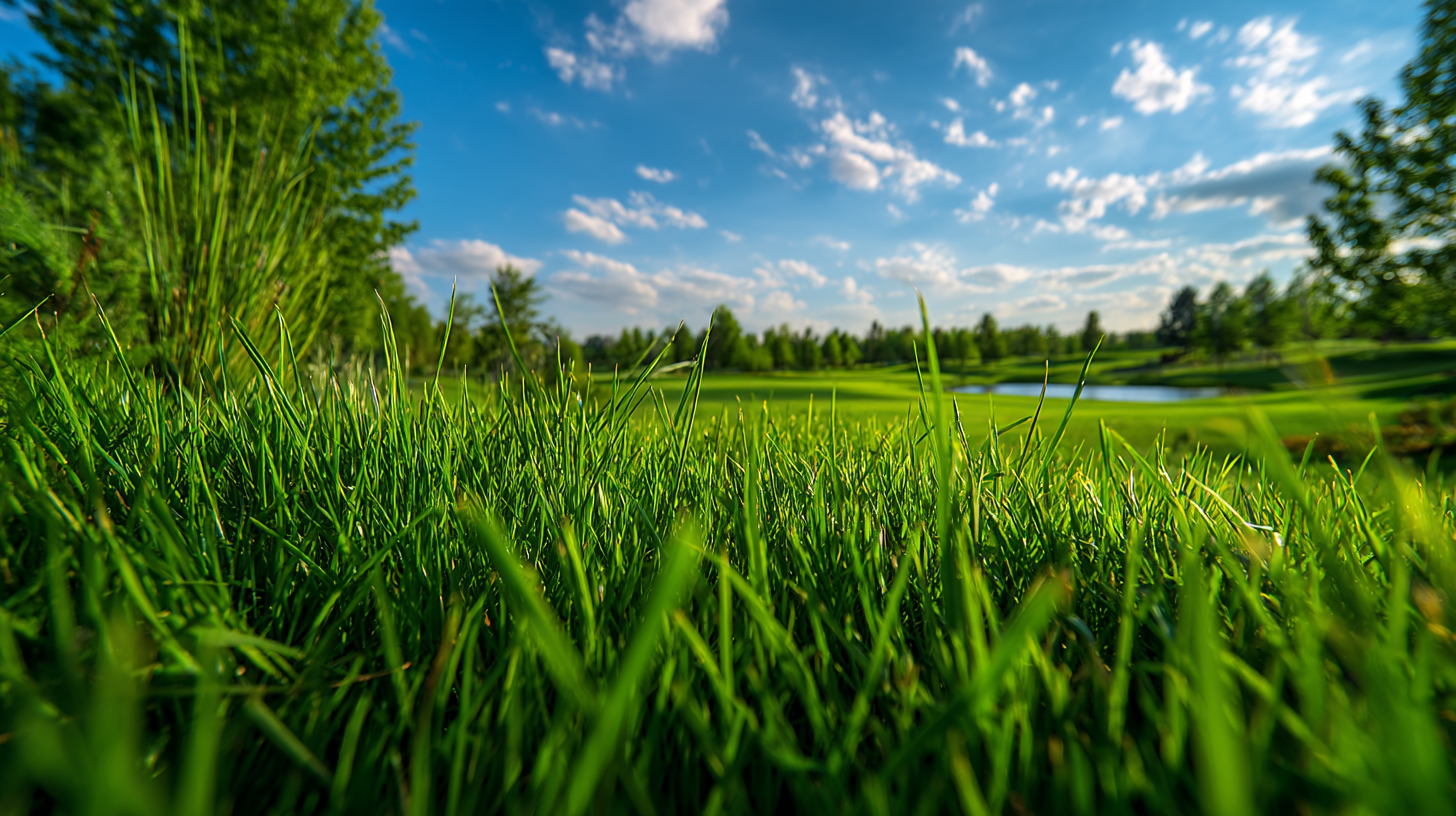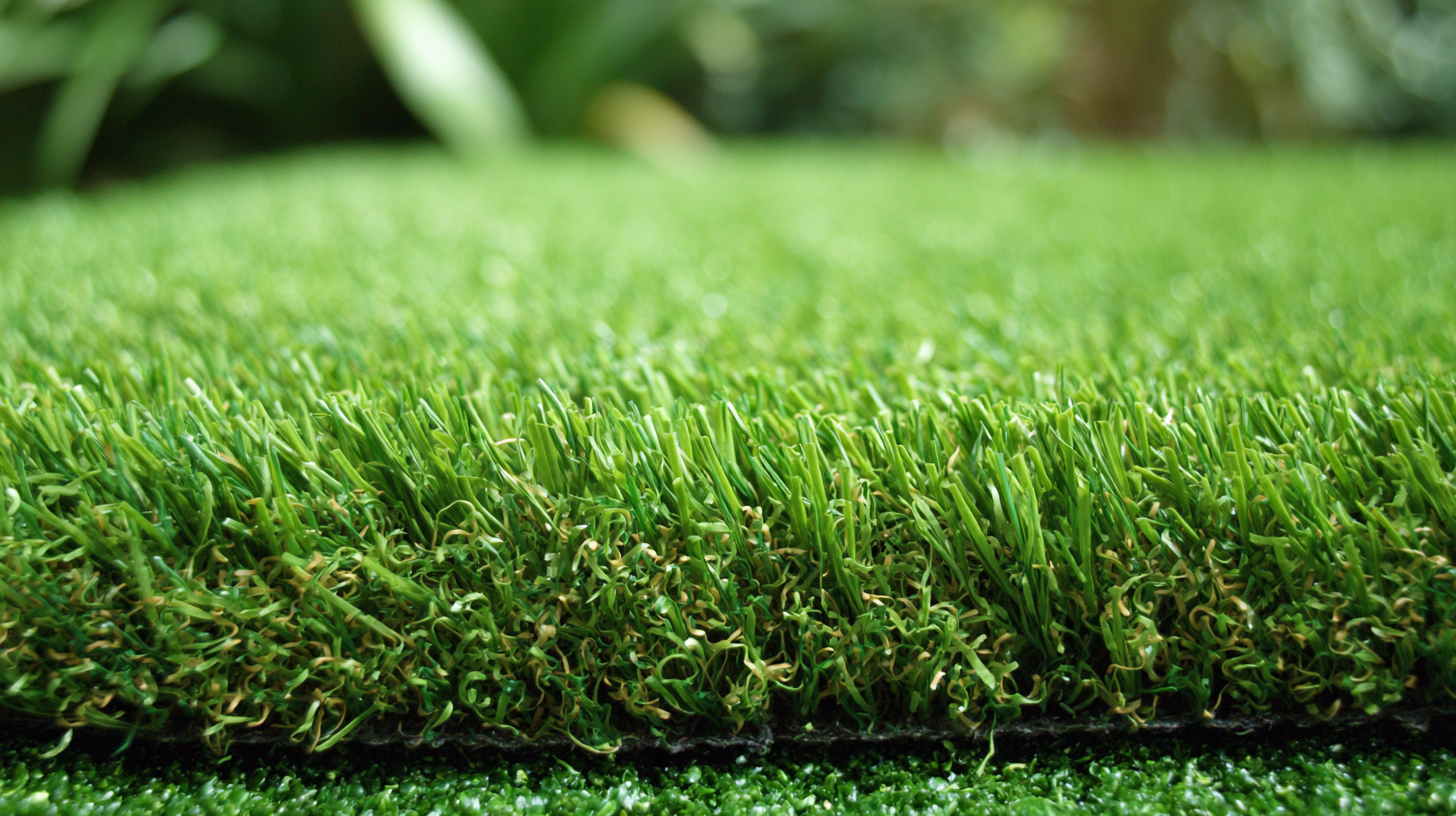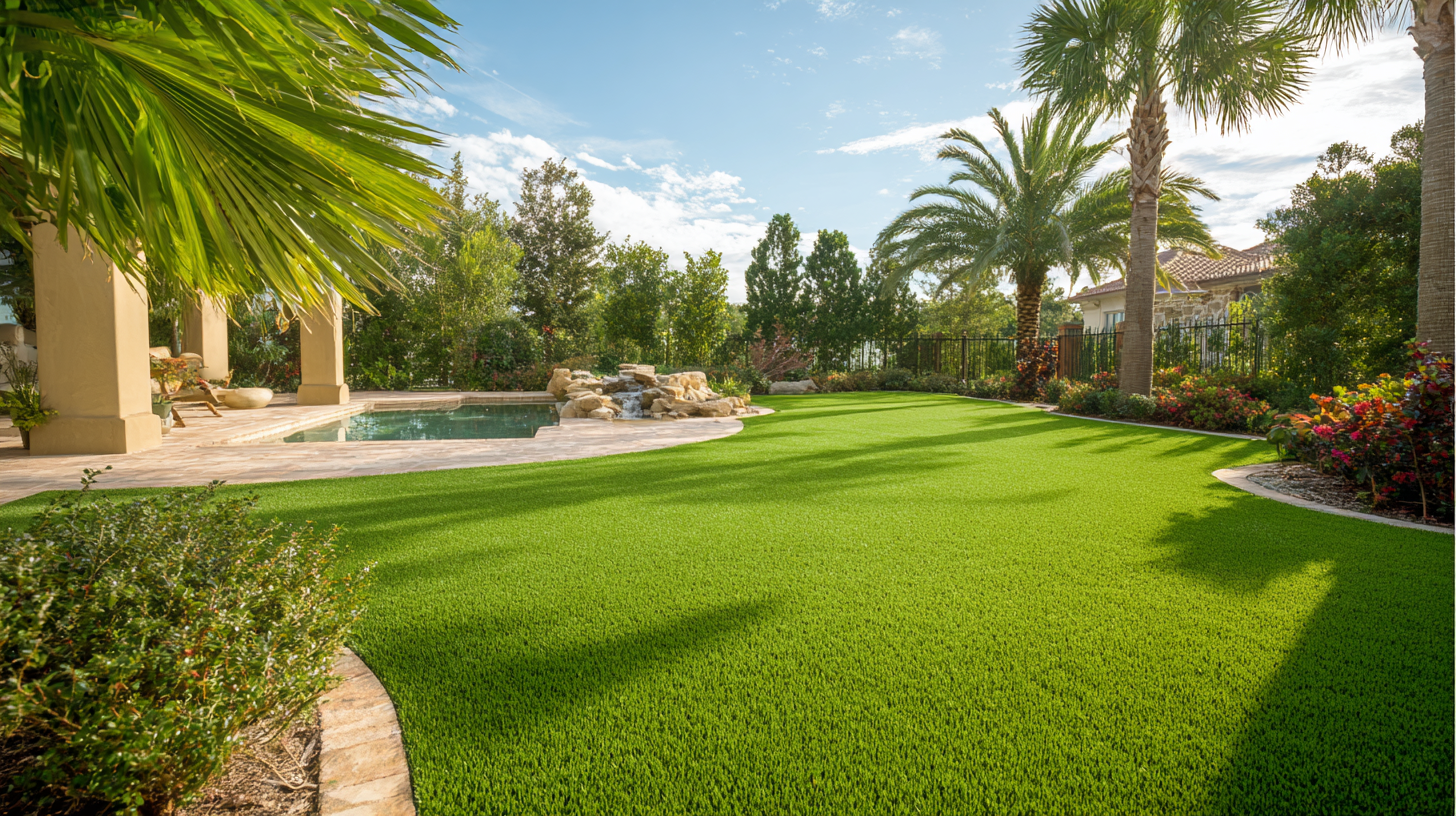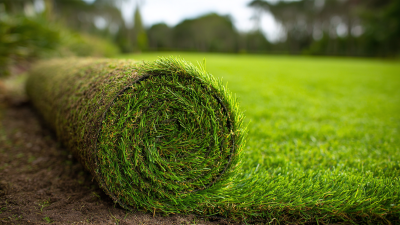Turf grass plays a crucial role in enhancing landscapes, contributing not just to aesthetic appeal but also to environmental sustainability. According to the 2023 report by the National Turfgrass Evaluation Program (NTEP), choosing the right type of turf grass can significantly influence water conservation, soil health, and overall landscape performance. The industry estimates that turf grass covers over 100 million acres in the United States alone, representing a substantial investment in both residential and commercial properties. With various types of turf grasses available, understanding their unique characteristics and suitability for specific climates and uses is essential. This ultimate guide aims to equip homeowners and landscape professionals with the knowledge needed to select the optimal turf grass, ensuring a thriving, sustainable landscape that meets their unique needs.

When it comes to selecting the right turf grass for your landscape, understanding the different types available is crucial. There are primarily two categories of turf grass: warm-season and cool-season grasses.
 Warm-season grasses, such as Bermuda and Zoysia, thrive in hot climates, making them ideal for southern regions. According to the National Turfgrass Evaluation Program, Bermuda grass can withstand higher traffic and recover quickly from damage, making it a favorite for sports fields and golf courses. Conversely, cool-season grasses like Kentucky bluegrass and tall fescue flourish in northern climates, providing lush green lawns during cooler months. The Turfgrass Water Conservation Alliance reports that selecting the right type of grass can reduce water consumption by up to 30%.
Warm-season grasses, such as Bermuda and Zoysia, thrive in hot climates, making them ideal for southern regions. According to the National Turfgrass Evaluation Program, Bermuda grass can withstand higher traffic and recover quickly from damage, making it a favorite for sports fields and golf courses. Conversely, cool-season grasses like Kentucky bluegrass and tall fescue flourish in northern climates, providing lush green lawns during cooler months. The Turfgrass Water Conservation Alliance reports that selecting the right type of grass can reduce water consumption by up to 30%.
Tip: When choosing turf grass, consider your local climate and the specific use of your lawn. For high-traffic areas, opt for a durable variety like Kentucky bluegrass mixed with perennial ryegrass, which not only establishes quickly but also provides a resilient sod.
Another key factor when selecting turf grass is soil type and drainage. For instance, sandy soils may require drought-tolerant species such as fescue, while heavier clay soils could benefit from the deep-rooted characteristics of Zoysia grass. Adopting the right grass type can save you on maintenance and ensure a healthy landscape.
Tip: Conduct a soil test before planting to determine pH levels and nutrient deficiencies, allowing you to choose a grass variety that will thrive in your specific soil conditions.
When considering turf grass for your landscape, several key factors come into play. Firstly, understanding your climate is essential. Different grass types thrive under varying temperature ranges and rainfall patterns. For instance, warm-season grasses like Bermuda and Zoysia are ideal for southern regions, whereas cool-season grasses such as Kentucky bluegrass and fescue work better in northern climates. A thorough assessment of your local weather conditions will guide you in selecting a grass type that can flourish in your specific environment.

Additionally, soil type and maintenance requirements are vital considerations. Conduct a soil test to determine its pH, texture, and nutrient content, as these elements significantly impact grass growth. Some grass varieties prefer sandy soils, while others thrive in clay or loamy environments. Furthermore, consider the level of maintenance you are willing to commit to. Low-maintenance options like fescue are great for those wanting a lush lawn without extensive care, while high-maintenance grasses may require more frequent mowing and fertilizing. By evaluating these factors, you can select the most suitable turf grass that meets your landscape needs.
When selecting the right turf grass for your landscape, it's essential to consider your specific climate zone and soil conditions. Different types of turf grass thrive under varying temperatures and moisture levels, making it crucial to choose the one that aligns with your geographical region. For instance, cool-season grasses like Kentucky bluegrass and fescues are suited for northern climates where temperatures are moderate. In contrast, warm-season grasses such as Bermuda and Zoysia are ideal for southern areas that experience hotter summers and milder winters.
Tips: Before planting, conduct a soil test to gauge pH levels and nutrient content. This information will help you select a grass type that not only survives but thrives in your environment. Additionally, consider shade tolerance; if your yard has significant tree cover, opt for shade-tolerant varieties like fine fescue or St. Augustine grass.
Another crucial aspect is water management. Choose grass types that demand less watering if you’re in a drought-prone area. Xeriscaping with drought-resistant grasses can conserve water while maintaining a healthy lawn. Always check local guidelines for grass selection to ensure the best results for your landscape needs.
Maintaining healthy turf grass is essential for achieving a vibrant and durable landscape. According to the Lawn Institute, approximately 30-35% of nitrogen used in lawns is lost to the environment due to improper fertilization practices. An effective maintenance regime must include a precise fertilization schedule, ideally starting in early spring and again in late summer, to promote root growth and resilience. Utilizing slow-release fertilizers can reduce nutrient runoff and provide a steady supply of nutrients to the grass, ensuring lush growth throughout the season.
Regular mowing is another critical aspect of turf grass maintenance. Research from the University of Maryland highlights that mowing at the correct height—generally around 2.5 to 3.5 inches for most species—encourages deeper root systems and helps outcompete weeds. Additionally, it’s essential to maintain sharp mower blades to prevent tearing the grass, which can lead to disease and stress. Lastly, consistent aeration, at least once a year, can alleviate soil compaction and enhance water and nutrient absorption, further contributing to a healthy lawn.
Implementing these maintenance tips will ensure that your chosen turf grass thrives and provides an attractive outdoor space for years to come.
When selecting turf grass for your yard, avoiding common pitfalls can save you time, effort, and money. One frequent mistake is choosing a grass type that isn’t suited to your local climate. For instance, cool-season grasses thrive in northern regions but may struggle in southern heat, leading to patchy lawns and increased maintenance. Always research the climate adaptability of your chosen grass species to ensure a lush, green lawn year-round.
Another mistake is neglecting the specific needs of your yard. Factors such as sunlight exposure, soil type, and intended use (like general aesthetics versus high-traffic areas) should significantly influence your grass selection. For example, if your yard is mostly shaded, opting for shade-tolerant varieties like fescue can make a huge difference. Failing to consider these aspects may result in poor growth and frustration. Prioritizing your yard's unique conditions will help you select a turf grass that not only looks great but also thrives in its environment.
| Grass Type | Climate Suitability | Sunlight Requirements | Maintenance Level | Common Mistakes to Avoid |
|---|---|---|---|---|
| Bermudagrass | Warm regions | Full sun | Medium | Overwatering |
| Tall Fescue | Transition zones | Partial shade to full sun | Low | Neglecting drought tolerance |
| Kentucky Bluegrass | Cool regions | Full sun to partial shade | High | Incorrect seeding times |
| Perennial Ryegrass | Cool regions | Full sun to partial shade | Medium | Choosing a variety unsuitable for climate |
| Zoysiagrass | Warm regions | Full sun to light shade | Low | Improper mowing height |












